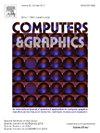No-reference geometry quality assessment for colorless point clouds via list-wise rank learning
IF 2.8
4区 计算机科学
Q2 COMPUTER SCIENCE, SOFTWARE ENGINEERING
引用次数: 0
Abstract
Geometry quality assessment (GQA) of colorless point clouds is crucial for evaluating the performance of emerging point cloud-based solutions (e.g., watermarking, compression, and 3-Dimensional (3D) reconstruction). Unfortunately, existing objective GQA approaches are traditional full-reference metrics, whereas state-of-the-art learning-based point cloud quality assessment (PCQA) methods target both color and geometry distortions, neither of which are qualified for the no-reference GQA task. In addition, the lack of large-scale GQA datasets with subjective scores, which are always imprecise, biased, and inconsistent, also hinders the development of learning-based GQA metrics. Driven by these limitations, this paper proposes a no-reference geometry-only quality assessment approach based on list-wise rank learning, termed LRL-GQA, which comprises of a geometry quality assessment network (GQANet) and a list-wise rank learning network (LRLNet). The proposed LRL-GQA formulates the no-reference GQA as a list-wise rank problem, with the objective of directly optimizing the entire quality ordering. Specifically, a large dataset containing a variety of geometry-only distortions is constructed first, named LRL dataset, in which each sample is label-free but coupled with quality ranking information. Then, the GQANet is designed to capture intrinsic multi-scale patch-wise geometric features in order to predict a quality index for each point cloud. After that, the LRLNet leverages the LRL dataset and a likelihood loss to train the GQANet and ranks the input list of degraded point clouds according to their distortion levels. In addition, the pre-trained GQANet can be fine-tuned further to obtain absolute quality scores. Experimental results demonstrate the superior performance of the proposed no-reference LRL-GQA method compared with existing full-reference GQA metrics. The source code can be found at: https://github.com/VCG-NJUST/LRL-GQA.

无参考几何质量评估的无色点云通过列表明智的排名学习
无色点云的几何质量评估(GQA)对于评估新兴的基于点云的解决方案(例如,水印、压缩和三维(3D)重建)的性能至关重要。不幸的是,现有的客观GQA方法是传统的全参考度量,而最先进的基于学习的点云质量评估(PCQA)方法针对的是颜色和几何扭曲,这两种方法都不适合无参考GQA任务。此外,缺乏具有主观分数的大规模GQA数据集,这些数据集总是不精确、有偏见和不一致,也阻碍了基于学习的GQA指标的发展。基于这些局限性,本文提出了一种基于列表明智排名学习的无参考几何质量评估方法,称为LRL-GQA,该方法由几何质量评估网络(GQANet)和列表明智排名学习网络(LRLNet)组成。提出的LRL-GQA将无参考GQA描述为一个列表排序问题,其目标是直接优化整个质量排序。具体而言,首先构建一个包含各种几何扭曲的大型数据集,称为LRL数据集,其中每个样本都是无标签的,但附带质量排名信息。然后,设计GQANet来捕获内在的多尺度逐块几何特征,以预测每个点云的质量指数。之后,LRLNet利用LRL数据集和似然损失来训练GQANet,并根据其失真程度对退化点云的输入列表进行排序。此外,预训练的GQANet可以进一步微调以获得绝对质量分数。实验结果表明,与现有的全参考GQA指标相比,所提出的无参考LRL-GQA方法具有更好的性能。源代码可以在https://github.com/VCG-NJUST/LRL-GQA上找到。
本文章由计算机程序翻译,如有差异,请以英文原文为准。
求助全文
约1分钟内获得全文
求助全文
来源期刊

Computers & Graphics-Uk
工程技术-计算机:软件工程
CiteScore
5.30
自引率
12.00%
发文量
173
审稿时长
38 days
期刊介绍:
Computers & Graphics is dedicated to disseminate information on research and applications of computer graphics (CG) techniques. The journal encourages articles on:
1. Research and applications of interactive computer graphics. We are particularly interested in novel interaction techniques and applications of CG to problem domains.
2. State-of-the-art papers on late-breaking, cutting-edge research on CG.
3. Information on innovative uses of graphics principles and technologies.
4. Tutorial papers on both teaching CG principles and innovative uses of CG in education.
 求助内容:
求助内容: 应助结果提醒方式:
应助结果提醒方式:


